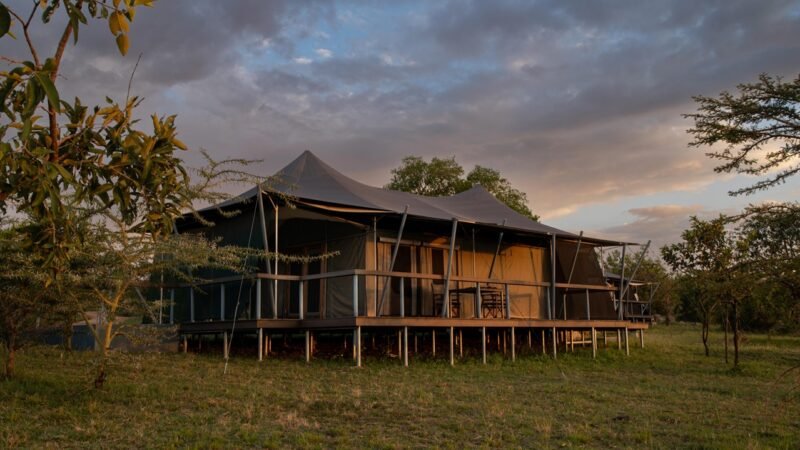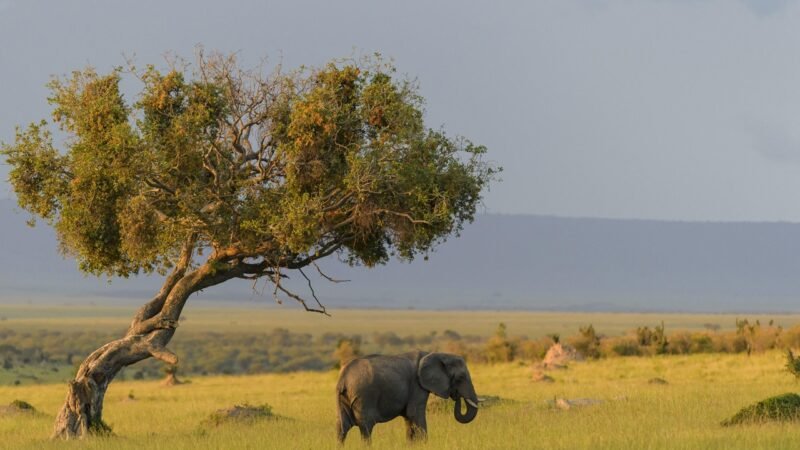Tanzania and Zanzibar Travel
Tanzania and Zanzibar Travel 2025: The Ultimate Safari and Beach Adventure
Tanzania and Zanzibar together offer an unrivaled travel experience, combining world-class safaris with idyllic beach escapes. From the Serengeti’s Great Migration to Zanzibar’s turquoise shores and Swahili culture, this duo is a dream for adventurers, nature lovers, and cultural enthusiasts. In 2025, new eco-friendly lodges, sustainable tours, and improved connectivity make it the perfect time to explore both destinations. This Tanzania and Zanzibar travel guide for 2025 covers the best experiences, accommodations, and tips for a seamless trip. Plan your ultimate safari and beach adventure now!
Why Combine Tanzania and Zanzibar in 2025?
Tanzania’s vast savannas and Zanzibar’s Spice Island charm create a perfect blend of adventure and relaxation. Tanzania offers iconic safari destinations like the Serengeti, Ngorongoro Crater, and Tarangire, while Zanzibar provides cultural immersion and beach bliss. In 2025, enhanced flight connections between Dar es Salaam and Zanzibar, plus new sustainable tourism initiatives, make this combo more accessible and eco-conscious.
Key Highlights for 2025:
- New eco-lodges in Tanzania’s national parks and Zanzibar’s beaches.
- Expanded community-led tours in Zanzibar, supporting local economies.
- Improved domestic flights and ferries for easy travel between mainland Tanzania and Zanzibar.
Top Experiences in Tanzania and Zanzibar
This guide highlights must-do activities for a combined trip, blending Tanzania’s wildlife adventures with Zanzibar’s cultural and coastal treasures.
1. Safari in the Serengeti National Park
The Serengeti is world-famous for the Great Migration, where millions of wildebeest and zebras move across the plains (January–March for calving, June–October for river crossings). Game drives ($150–$300/day) with operators like Tanzania Safari Co. offer sightings of lions, elephants, and cheetahs. In 2025, new eco-camps will enhance sustainable safari experiences.
Why It’s a Must: The Serengeti is a bucket-list safari destination.
Tip: Book 6–12 months in advance for peak migration seasons.
2. Explore Ngorongoro Crater
The Ngorongoro Crater, a UNESCO World Heritage Site, is a natural amphitheater teeming with wildlife, including rhinos, hippos, and flamingos. Guided tours ($200–$400/day) include game drives and visits to Maasai villages. New 2025 cultural tours will offer deeper insights into Maasai traditions.
Why It’s Special: A compact ecosystem with diverse wildlife and cultural encounters.
Cost: Park fees $60–$80/person; tours $200–$400.
Tip: Combine with a Serengeti safari for a multi-day adventure.
3. Wander Stone Town in Zanzibar
Stone Town, Zanzibar’s UNESCO-listed historic center, is a cultural gem with coral stone buildings and carved wooden doors. Visit the House of Wonders ($5–$10) and Sultan’s Palace Museum ($5–$8) to explore Zanzibar’s spice trade and slave trade history. Guided walking tours with Zanzibar Cultural Tours ($15–$25) bring the past to life. In 2025, new exhibits at the Freddie Mercury Museum ($8–$10) will attract music fans.
Why It’s a Must: A cultural contrast to Tanzania’s safaris.
Tip: Wear modest clothing and visit early to avoid heat.
4. Relax on Zanzibar’s Beaches
Zanzibar’s beaches, like Nungwi, Paje, and Pongwe, offer white sands and turquoise waters for post-safari relaxation. Swim, sunbathe, or try paddleboarding ($15–$30). In 2025, new lifeguard stations at Nungwi and Kendwa will enhance safety. Nungwi’s Mnarani Aquarium ($5–$10) lets you swim with rescued sea turtles.
Why It’s Great: Perfect for unwinding after a safari.
Tip: Visit Paje for a quieter, less touristy vibe.
5. Snorkel or Dive at Mnemba Atoll
Mnemba Atoll, a protected marine reserve off Zanzibar’s northeast coast, is ideal for snorkeling ($40–$60) and diving ($100–$150). Spot dolphins, turtles, and colorful reefs with eco-friendly operators like One Ocean. New 2025 coral planting workshops will support marine conservation.
Why It’s Eco-Friendly: Funds reef protection and limits group sizes.
Tip: Use reef-safe sunscreen to protect corals.
6. Take a Spice Tour in Zanzibar
Zanzibar’s spice farms showcase its history as the Spice Island. Tours ($15–$25) visit farms growing cloves, vanilla, and cardamom, with Swahili lunches included. In 2025, new community-led tours with Zanzibar Spices Tours will highlight sustainable farming and women-led cooperatives.
Why It’s Special: Combines culture, history, and cuisine.
Tip: Buy spices as souvenirs ($2–$5).
7. Visit Tarangire National Park
Tarangire, known for its elephant herds and baobab trees, is a quieter safari destination in Tanzania. Game drives ($150–$300/day) offer sightings of giraffes, leopards, and birds. New eco-lodges in 2025 will focus on low-impact tourism.
Why It’s Great: Less crowded than the Serengeti, with stunning landscapes.
Tip: Visit June–October for peak wildlife sightings.
8. Experience Sauti za Busara in Zanzibar
Held in February 2025, Sauti za Busara in Stone Town’s Old Fort is a vibrant music festival featuring Swahili taarab, Afrobeat, and jazz ($30–$50 for a three-day pass). New workshops in 2025 will explore African music history, adding cultural depth to your trip.
Why It’s a Must: A lively complement to Tanzania’s safari adventures.
Tip: Book accommodations early for festival dates.
Practical Tips for Tanzania and Zanzibar Travel
- Best Time to Visit: June–October for Tanzania’s dry season (ideal for safaris) and Zanzibar’s beaches. December–February is also dry and aligns with Sauti za Busara. Avoid April–May due to heavy rains.
- Getting Around:
- Tanzania: Book multi-day safari tours ($150–$400/day) with operators like Tanzania Safari Co. for transport and lodging. Fly from Arusha to Zanzibar via Dar es Salaam ($100–$200).
- Zanzibar: Use taxis ($20–$50) or dala-dalas ($0.50–$2) for island travel. Walk in Stone Town; rent scooters ($20–$30/day) for beaches.
- Visas and Health: Tanzania requires a tourist visa ($50–$100, available online). Yellow fever vaccination may be needed if coming from endemic areas. Use mosquito repellent (malaria risk) and bottled water.
- Cultural Respect: Dress modestly in Stone Town and villages (covering shoulders and knees). Ask permission before photographing locals or Maasai.
- Sustainable Travel: Choose eco-certified safari camps and Zanzibar lodges. Support community-led tours and avoid plastic waste.
- Safety: Use reputable operators for safaris and tours. Secure valuables in crowded areas like Stone Town markets.
Accommodations for Your Trip
- Tanzania (Safari):
- Serengeti Serena Safari Lodge ($200–$400/night): Luxury with eco-friendly practices.
- Kipepeo Lodge (Tarangire) ($100–$200/night): Mid-range with sustainable design.
- Arusha Backpackers ($20–$40/night): Budget option in Arusha before safaris.
- Zanzibar:
- Zuri Zanzibar (Kendwa) ($300–$500/night): Luxury eco-resort with beachfront villas.
- Paje by Night (Paje) ($30–$60/night): Budget-friendly with eco-conscious amenities.
- Emerson on Hurumzi (Stone Town) ($150–$250/night): Historic charm for cultural immersion.
Booking Tip: Reserve 6–12 months in advance for safaris and 3–6 months for Zanzibar stays via Booking.com or direct lodge sites.
Sample 7-Day Tanzania and Zanzibar Itinerary
Day 1: Arrive in Arusha. Stay at Arusha Backpackers ($30). Explore local markets ($5).
Day 2–3: Safari in Serengeti with Tanzania Safari Co. ($600 for two days). Stay at Serengeti Serena Safari Lodge ($300/night).
Day 4: Visit Ngorongoro Crater ($250). Fly to Zanzibar via Dar es Salaam ($150). Stay at Zanzibar Coffee House ($80).
Day 5: Explore Stone Town and Forodhani Night Market ($10). Stay in Stone Town.
Day 6: Snorkel at Mnemba Atoll ($50). Stay at Paje by Night ($40). Dine at Mr. Kahawa ($6).
Day 7: Take a spice tour ($20). Relax on Paje Beach. Depart from Zanzibar.
Total Cost: ~$1,600–$2,000 for one person, excluding international flights.
Why Tanzania and Zanzibar in 2025?
Combining Tanzania’s epic safaris with Zanzibar’s beaches and culture creates a once-in-a-lifetime adventure. In 2025, new eco-lodges, sustainable tours, and seamless connectivity make this duo more appealing than ever. From tracking wildebeest to savoring Zanzibar’s spices, your trip will blend thrill and tranquility.
Plan your safari and beach adventure now! Share your travel plans or questions in the comments, or explore our Zanzibar Travel Guide 2025 for more inspiration!
About the Author: Amina Juma is a Zanzibar native and travel writer with 12 years of experience exploring Tanzania and Zanzibar’s wildlife, culture, and landscapes. Passionate about sustainable tourism, she shares tips for authentic adventures. Follow her on Instagram @ZanzibarStories.


